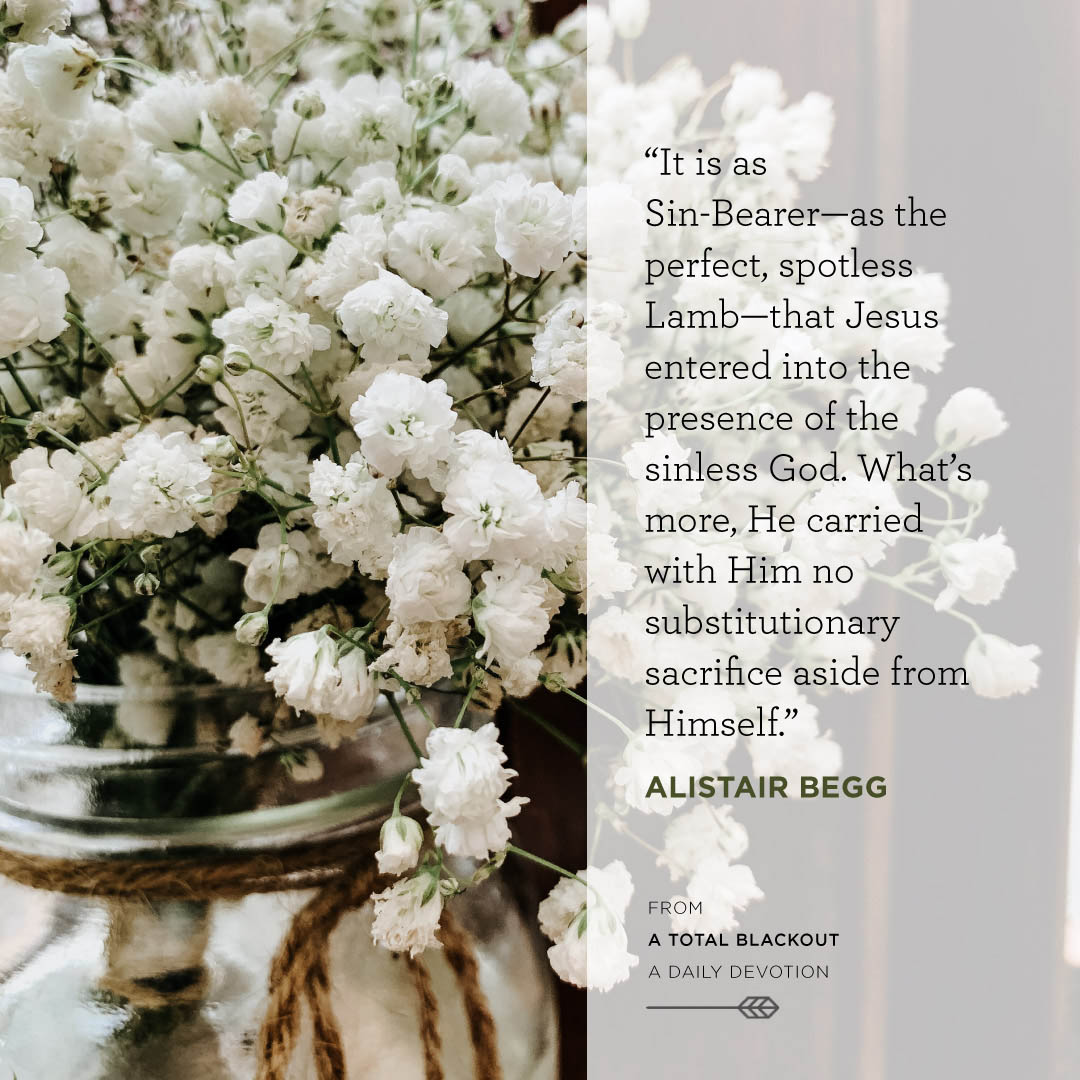The Man on the Middle Cross: A 7-Day Easter Reading Planنموونە

A TOTAL BLACKOUT
“It was now about the sixth hour, and there was darkness over the whole land until the ninth hour, while the sun’s light failed.” LUKE 23:44-45 (ESV)
Following Jesus’ crucifixion, right around midday, the land was swallowed up in darkness. Imagine how unsettling that must have been! All of a sudden, people surely felt more vulnerable, more on edge. There may have been some who had been present at the arrest of Jesus and remembered that He had warned, “This is your hour, and the power of darkness” (Luke 22:53). But the majority probably said to one another, I wonder what this darkness is about? I wonder why this is taking place?
In one sense, they should have known the answer to that question. Jesus’ death occurred during the celebration of the Passover in Jerusalem—a celebration that had taken place annually for hundreds of years. During this time, the Jews would recall that the final plague God sent over Egypt before the arrival of the angel of death and the death of the firstborn sons was that of darkness over all the land. They would recall that after the darkness came death: that on that occasion, only those protected by the blood of the Passover lamb awakened in the morning to find their firstborn still with them. And now, here, in the greater exodus previewed by that first one, darkness preceded the death of Christ, who was and is the perfect Passover Lamb.
It is as Sin-Bearer—as the perfect, spotless Lamb—that Jesus entered into the presence of the sinless God. What’s more, He carried with Him no substitutionary sacrifice aside from Himself. Before this moment in history, to enter the holy place of God’s presence in the temple in Jerusalem, the high priest had to make a sacrifice for his own sin and then make sacrifice for the sins of those he represented. But this High Priest entered the heavenly presence of the holy God carrying nothing. Why? Because He Himself needed no sacrifice, for He was perfect, sinless; and yet He Himself was the sacrifice. Jesus was the Lamb. There was nothing else He could carry and nothing else He should carry. As Peter explains, “He himself bore our sins in his body on the tree” (1 Peter 2:24).
And so the darkness of God’s judgment did not have the last word. Because Jesus became sin, incurring the full fury of God’s wrath, we can be transferred into God’s kingdom, “into his marvelous light” (1 Peter 2:9). There is nothing else in all the world that demonstrates how real God’s love is for sinners and how real our sin is to God.
Well might the sun in darkness hide
And shut his glories in
When Christ the mighty Maker died
For man the creature’s sin.[1]
- How is God calling me to think differently?
- How is God reordering my heart’s affections—what I love?
- What is God calling me to do as I go about my day today?
[1] Isaac Watts, “Alas, and Did My Savior Bleed” (1707).

Scripture
About this Plan

Nearly everyone agrees that this world is broken. But what if there’s a solution? This seven-day Easter plan begins with the unique experience of the thief on the cross and considers why the only real answer to brokenness is found in the execution of an innocent man: Jesus, the Son of God.
More
پلانە پەیوەستەکان

The Finish Strong: Transition Through Seasons Seamlessly

Building a Life That Matters for Good - the Quest for Significance

In Her Image: Character Study of the Proverbs 31 Woman

R.I.P or Rest in Peace With God Daily

The Year of God's Divine Agenda

Authentic Manhood

Encountering the Lamb of God

Gifts and Gratitudes - a 5-Day Reading Plan

Christianity in a Nutshell
